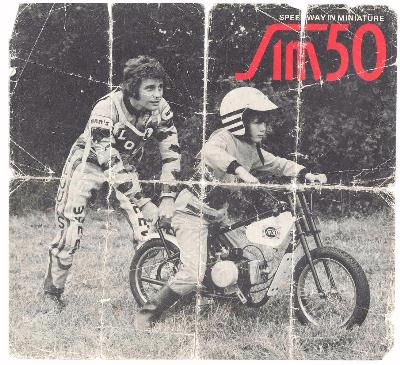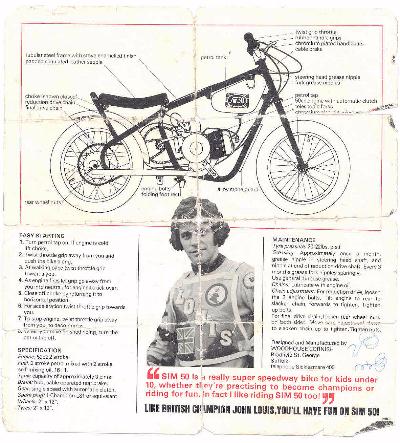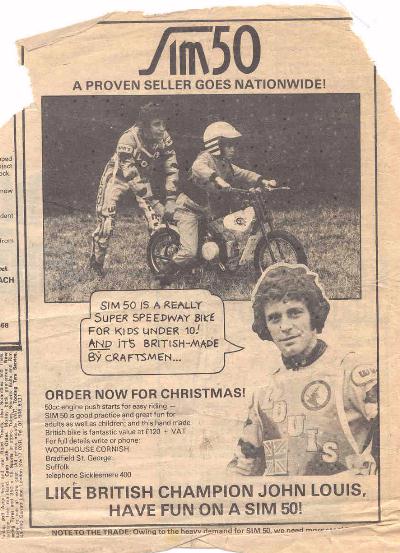 Go
to the Archive index
Go
to the Archive indexI justify writing about this model as it shares its power source with the Ariel 3. A strange child's machine fabricated in the seventies by the Woodhouse-Cornish Company in Bradfield St George, Suffolk.

Now I remember very well, Pride and Clarke selling off the surplus, new Ariel 3 engines at £12.50 a lump, and it was £12.50 not £12-10s-0d, so it must have been mid-to-late seventies. I bought four, it seemed the right thing to do, and made a 'little' profit a few years later. I acquired two actual Ariels, so there didn't seem a need to keep a new engine when it could be sold for a profit (oh, dear, will I never learn?)
Clearly, the engines became available and the SIM was born after? The wheels were spoked in the original adverts, but mine has cast alloy wheels, and not ex-Moby either, but I still haven't discovered whether they were specially cast up.

The engine was very carefully altered so that it could drive by chain. A reduction sprocket was attached to the frame, under a white fibre-glass cover, and then dropped down to the back wheel with another chain. The first sprocket is in brass bearings and this grates, grinds and sends vibration right through the cover and the machine. The automatic clutch failed at some time, and a manufactured one-off clutch plate that was fitted no longer disconnects when you stop. Not difficult to sort out, I know. It did have a very clever little needle roller bearing on the drive, it allows the shaft to roll quite free one way, but grips and locks the shaft the other, an excellent piece of engineering, allowing the original Ariel to 'free-wheel', I would imagine.
The tank is a beautiful alloy unit, and the seat is in the usual gaudy red and white, as per speedway units of the time.

The SIM was endorsed by John Louis, the Ipswich Speedway captain and whether he had any financial connections, I don't know. John went on to build seven-speed Sachs-engined bikes for Juniors, but these only went to Sweden.
I would like to know if there is anyone still out there that either worked at the 'factory' or at least had some dealings with these bikes, who made all the bits, and is John Louis still about? It would be nice to compile everything now before it all gets lost. Can anyone help? Any small snippet would be very welcome. Has anyone actually still got one even?
An example of the SIM50 is on display in Ipswich Transport Museum.
When he wrote this article, George alerted enthusiasts to the existence of these unusual little bikes. In the following eight years, several surviving examples were discovered, also a great deal more about how they came to be built. The story of the SIM50, Round in Circles, was publiched in the October 2009 edition of Iceni CAM Magazine.
First published, August 2001